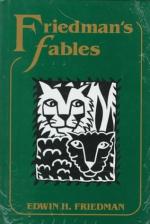
|
| Name: _________________________ | Period: ___________________ |
This test consists of 15 multiple choice questions and 5 short answer questions.
Multiple Choice Questions
1. What does the doctor think about Billy in "Projection"?
(a) Billy is angry.
(b) Billy is dying.
(c) Billy is sad.
(d) Billy is normal.
2. How does baby bird decide to punish his parents?
(a) He hides.
(b) He yells at them.
(c) He jumps out of the nest.
(d) He builds a better nest.
3. How do people treat John because of his nervous condition?
(a) They buy him umbrellas.
(b) They make sure he never takes a taxi.
(c) They beat him.
(d) They are oversenstive to his needs.
4. How does the moth try to help the other animal in "Round in Circles"?
(a) He sings.
(b) He sounds an alarm.
(c) He tries to show a different perspective.
(d) He holds open the window.
5. According to Faust, what is external, objective knowledge good for?
(a) Finding the truth.
(b) Reading a map.
(c) Getting into college.
(d) Writing a book.
6. Who does the man encounter in "The Bridge" when he crosses the bridge?
(a) A woman crying.
(b) A young child.
(c) His father.
(d) A man with a rope around his chest.
7. How many children do the birds in "Soaring" have?
(a) 2.
(b) 9.
(c) 12.
(d) 13.
8. What do Faust and Oedipus do together in the Interlude?
(a) Debate.
(b) Eat brunch.
(c) Duel.
(d) Fish.
9. What does Cassandra argue is the fundamental aspect of human existence?
(a) Relgion.
(b) War.
(c) Uncertainty.
(d) Peace.
10. What image do baby bird's parents want to project in "Soaring"?
(a) Harsh disciplinarians.
(b) Good parents.
(c) Run down parents.
(d) Lazy workers.
11. What happens when the doctor in "The Power of Belief" performs his test?
(a) The man coughs.
(b) The man bleeds.
(c) The man screams.
(d) The man dies.
12. How does the man treat his plant in the story "An American Holly"?
(a) He hates it.
(b) He tries to kill it.
(c) He loves it.
(d) He ignores it.
13. What is the lamb afraid of in "The Friendly Forest"?
(a) A bear,
(b) The shears.
(c) A wolf.
(d) A tiger.
14. Who is the first family in "Raising Cain: A Case History of the First Family"?
(a) The Bush family.
(b) The Clinton family.
(c) Adam, Eve, Cain, and Able.
(d) Adam and Eve.
15. Who warns the lamb about her friends' advice?
(a) A member of the forest community.
(b) Her mother.
(c) The farmer.
(d) Her father.
Short Answer Questions
1. What happens to the person the man encounters on the bridge?
2. What does communication depend on in "The Failure of Syntax"?
3. What are most of the bird couples' children able to do in "Soaring"?
4. What does the man in "The Power of Belief," try to convince people of?
5. What challenge did Edwin H. Friedman face in writing his fables?
|
This section contains 459 words (approx. 2 pages at 300 words per page) |

|




